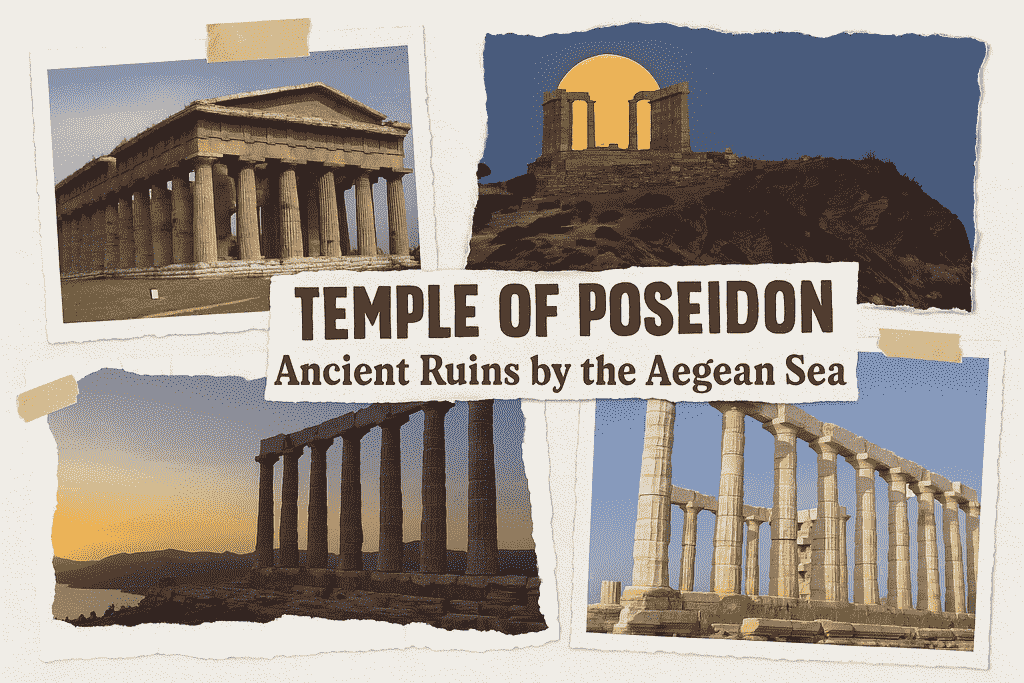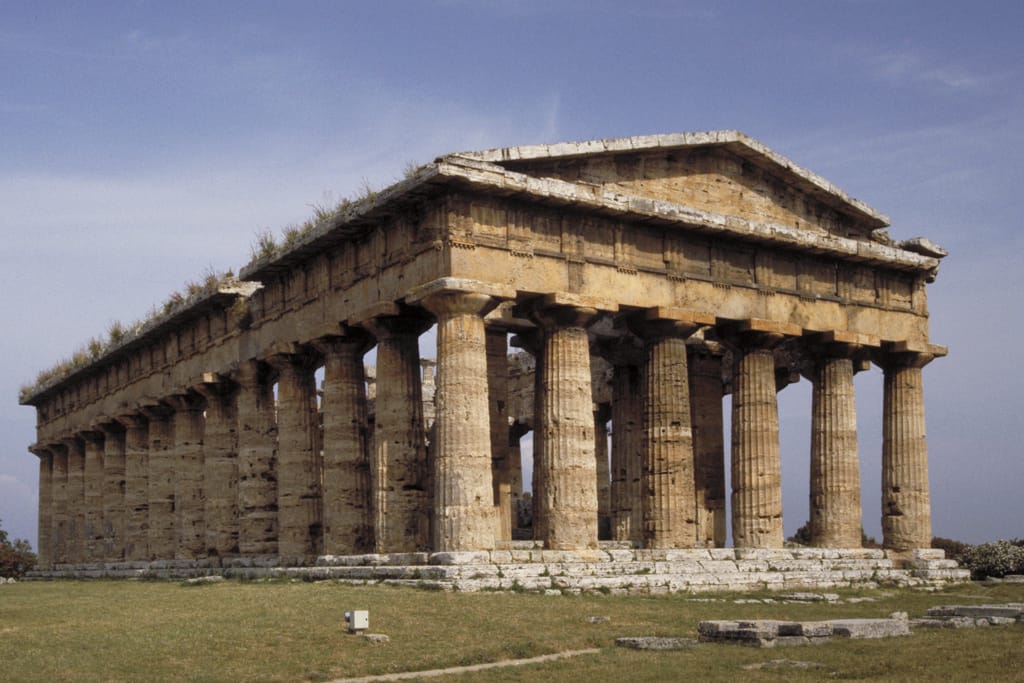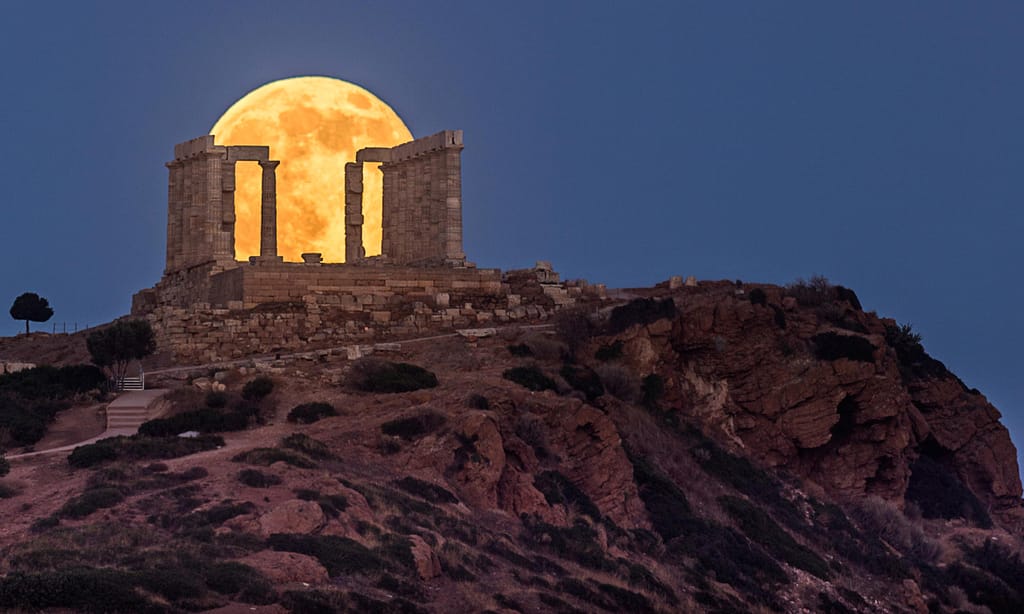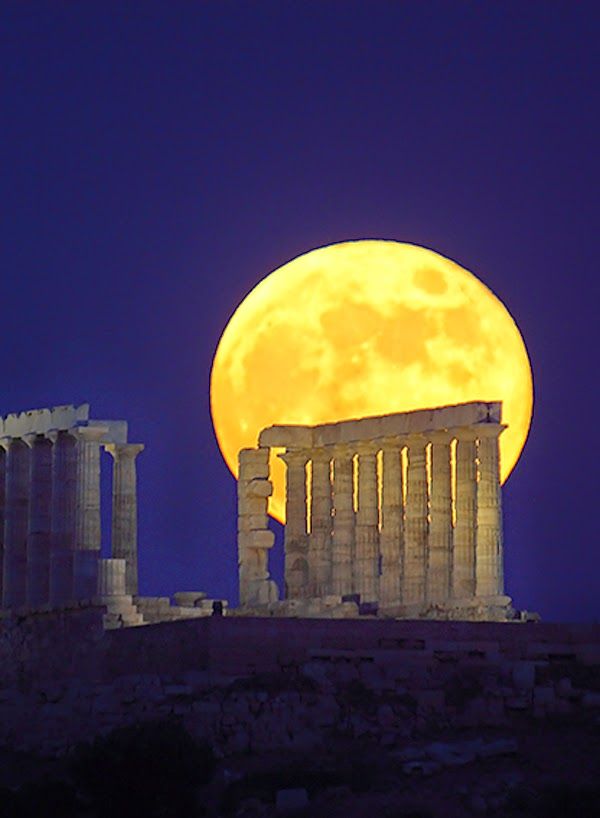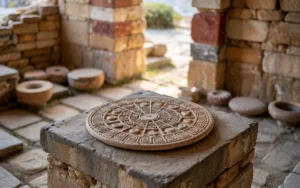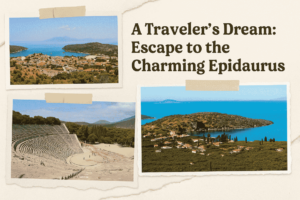Temple of Poseidon: Ancient Ruins by the Aegean Sea
The Temple of Poseidon isn’t just a ruin. It’s a story carved in marble, perched dramatically on the cliffs of Cape Sounion, overlooking the endless blue of the Aegean Sea. While the Acropolis might be the headliner in Athens, the Temple of Poseidon offers a much more intimate and soul-stirring experience. This ancient site is quieter, wind-blown, and wild, as though the god of the sea himself still watches from the broken columns above the crashing waves.
A Place of Myths and Legends
Ancient Greeks believed that Cape Sounion was sacred. Homer even mentioned it in The Odyssey. Sailors prayed to Poseidon here, hoping for calm seas before they departed into the unknown. The god of the sea was both feared and revered, and this cliffside sanctuary was one of the most important religious sites in his honor. The energy of the past still hums through the stone, especially at sunset when golden light bleeds into the sky and the shadows stretch like ancient ghosts across the marble.
Getting There: Easy Escape from Athens
Located just 70 kilometers southeast of Athens, Cape Sounion makes for a perfect half-day or full-day trip. You can rent a car and enjoy the scenic coastal drive in about 1.5 hours. The road hugs the coastline, offering panoramic views of the Aegean and small beach towns along the way. If you don’t drive, you can also take a guided tour or a public KTEL bus from Athens’ Pedion Areos station. Buses are affordable (around €7 one way), and they run several times daily.
What to Expect at the Site
The Temple of Poseidon stands atop a rocky headland surrounded on three sides by the sea. What remains today are several elegant Doric columns—sturdy, white, and weathered by time. Though only about 15 of the original 34 columns still rise toward the sky, the temple’s footprint and form are still very much alive. There’s a walking path around the perimeter, with plenty of space to stop, admire, and reflect. You won’t find flashy exhibitions or crowds here—just ancient architecture, open air, and endless blue horizons.
Best Time to Visit
The temple is open year-round, but the best time to visit is late spring (April to early June) or early fall (September to October). Summer months can be hot, and the site offers minimal shade. Sunsets at the Temple of Poseidon are legendary, so try to time your visit for late afternoon. Locals and visitors often gather just to watch the sun dip into the sea, casting a golden glow over the ruins.
Entrance Fees and Opening Hours
The entrance fee for adults is around €10, with reduced rates (about €5) for EU seniors and students. Children under 18 often enter for free. The temple is open from 9:00 AM until sunset. Make sure to check the exact time as it varies by season. There is a small ticket booth at the entrance, and payments by card are generally accepted.
Wear and Pack Smart
The path to the temple isn’t difficult, but it is rocky and uneven in places. Comfortable walking shoes are essential. The breeze from the sea can feel refreshing or brisk, depending on the season, so bring a light jacket or scarf. In summer, sunscreen and a hat are must-haves. There’s no shade around the ruins, and the sun can be intense even in the early evening.
Nearby Facilities and Food
Right near the site entrance, you’ll find a small café and a souvenir shop. The café serves decent coffee, soft drinks, and light snacks, but nothing too filling. If you’re planning to stay for sunset, it’s a good idea to bring a picnic or snacks. For a real meal, head to one of the seafood tavernas in nearby Lavrio or along the coast. Fresh grilled fish, Greek salad, and fried calamari pair perfectly with a view of the sea.
Historical Background and Architecture
The Temple of Poseidon was built around 440 BCE during the Golden Age of Athens. Constructed from local white marble, it followed the classic Doric style, simple and strong in design. The temple originally had a rectangular floor plan with six columns at the ends and thirteen along the sides. Like many temples of the era, it stood on a raised platform with steps leading up to the sanctuary. Inside was once a statue of Poseidon himself, now lost to time. Though many of the temple’s sculptures and decorations have been eroded or removed, its sense of grandeur and symmetry still echoes across centuries.
A Favorite Among Poets and Travelers
The temple has inspired countless artists and travelers over the years. Most famously, Lord Byron visited in the 19th century and even carved his name into one of the columns—a controversial act by today’s standards, but a testament to the temple’s magnetic pull. Romantic, isolated, and windswept, it’s easy to see how writers and dreamers fall under its spell.
Photography Tips
This is one of the most photogenic spots in all of Greece. Come in the late afternoon for golden light that enhances the marble’s warm tones. A wide-angle lens helps capture the temple with the sea below. For the best sunset shot, position yourself on the southwest edge of the hill and shoot toward the temple with the sun setting behind. Tripods are allowed, but drones typically aren’t.
Staying in the Area
While many people visit as a day trip from Athens, staying overnight near Cape Sounion offers a peaceful retreat. There are several boutique hotels and seaside resorts in the area. The Aegeon Beach Hotel, located just below the temple cliffs, offers direct views of the ruins at night—an unforgettable sight when they are lit up under the stars.
Hidden Trails and Beaches
If you have time, explore the walking paths around the cape. There are a few narrow trails that lead to secluded coves where you can swim or relax on quiet beaches. The water is clear, refreshing, and perfect for a post-temple dip. Bring a swimsuit and towel if the weather is warm—you might just find your own private slice of paradise.
Guided or Independent Visit?
You can absolutely visit the Temple of Poseidon on your own, and it’s simple enough to navigate. But a guided tour (typically €40–€60 per person including transport) offers historical context and local stories that bring the site to life. Some tours also include a stop at Lake Vouliagmeni or combine the visit with other scenic points along the Athens Riviera.
Cultural Tips for Visitors
Remember that this is a historic site, not just a photo op. Don’t climb on the ruins, and be respectful of signs and barriers. Avoid loud behavior—many people come for a quiet, reflective experience. If you’re here for sunset, stay after the crowd disperses. The real magic begins when silence returns and the stars start to appear above the sea.
Local Crafts and Souvenirs
The small gift shop near the entrance sells replicas of ancient artifacts, handmade ceramics, and Poseidon-themed jewelry. Prices are reasonable, and you’ll be supporting local artisans. Look for small statues, postcards, or sea-salt-based beauty products made in the region.
Why It’s Worth the Trip
The Temple of Poseidon is not just another ruin—it’s a moment frozen in time, a place where natural beauty and ancient history collide. Whether you’re a history buff, a romantic traveler, or simply someone who appreciates a good view, Cape Sounion will stay with you long after you leave. It’s close enough to Athens to be convenient, but far enough to feel like a true escape.
Final Thoughts
Greece is full of wonders, but few offer the quiet majesty of the Temple of Poseidon. Come for the view, stay for the atmosphere, and leave with a deeper connection to the spirit of the sea. Let the wind wrap around you, the waves whisper ancient secrets, and the marble shine beneath your feet. Some places don’t just show you history—they make you feel it.

